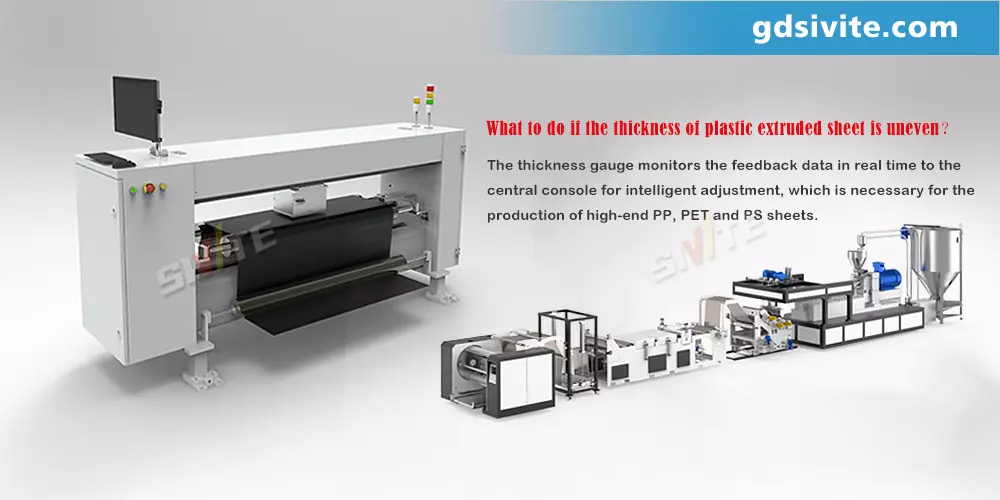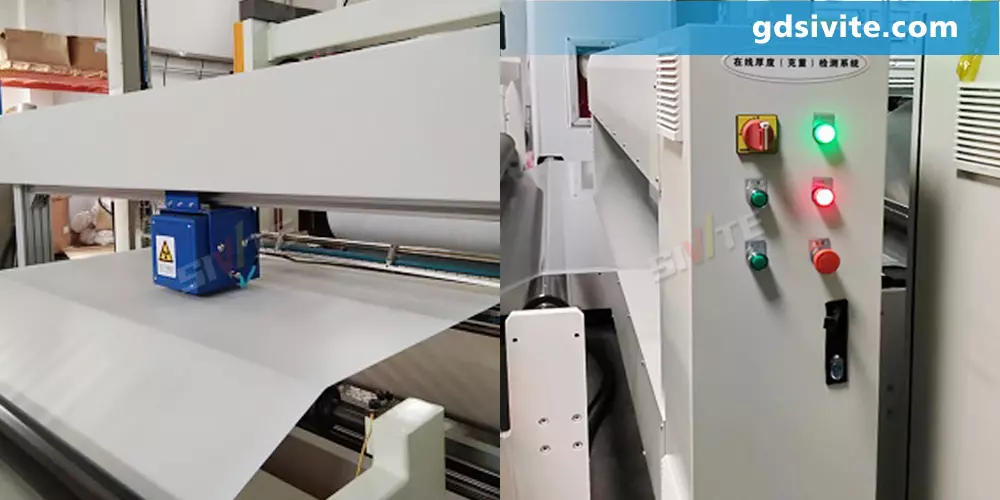Uneven thickness of extruded sheet? Thickness gauge solution
Uneven thickness in plastic sheet extrusion is a common challenge that can significantly impact product quality and production efficiency. Whether you're manufacturing packaging materials, industrial sheets, or consumer goods, maintaining consistent thickness is critical. Fortunately, advanced technology offers a reliable solution: plastic sheet thickness gauges. In this article, we’ll explore the two main causes of thickness inconsistencies and how integrating a plastic sheet thickness gauge with real-time monitoring and PLC adjustments can ensure uniformity, making it an essential tool for high-end sheet extrusion lines.
1. Causes of Uneven Thickness: Machine and Molding Factors

The first major factor contributing to thickness variations is the extrusion and molding process itself. Issues such as inconsistent melt temperature, uneven screw speed, or misaligned dies can lead to uneven material flow, resulting in thicker or thinner sections of the sheet. Additionally, cooling system inefficiencies, such as uneven air or water flow, can cause differential cooling rates, further exacerbating thickness discrepancies. These mechanical and thermal factors must be carefully calibrated to minimize deviations. However, even with optimal machine settings, minor fluctuations can still occur, necessitating a more proactive solution.
2.The Role of Plastic Sheet Thickness Gauges in Real-Time Monitoring
This is where plastic sheet thickness gauges come into play. These devices, often installed inline, provide continuous, non-contact measurements of the sheet’s thickness as it exits the extrusion line. By detecting variations in real time, the gauge sends precise feedback to the PLC (Programmable Logic Controller) system, enabling immediate adjustments to the extrusion parameters. Unlike manual measurements, which are time-consuming and prone to human error, automated plastic sheet thickness gauges ensure consistent monitoring, reducing waste and improving product consistency.
3. How PLC System Adjustments Enhance Thickness Control
The integration of a plastic sheet thickness gauge with the PLC system is the key to automated thickness control. Once the gauge detects a deviation, it transmits data to the PLC, which can adjust screw speed, die pressure, or cooling rates to compensate. For example, if the gauge detects a thinner section, the PLC can increase melt pressure to add material, while a thicker section may require a reduction in extrusion speed. This closed-loop feedback system ensures that the sheet maintains a uniform thickness, meeting stringent quality standards. High-end extrusion lines rely on this technology to achieve precision that manual methods simply cannot match.

4. Why High-End Sheet Extrusion Lines Need This Technology
For manufacturers aiming to produce premium-quality plastic sheets, investing in a plastic sheet thickness gauge is no longer optional—it’s a necessity. In industries like packaging, electronics, and automotive, even minor thickness inconsistencies can lead to structural weaknesses, cosmetic defects, or material waste. By leveraging real-time monitoring and automated adjustments, manufacturers can:
- Reduce material scrap and production costs
- Improve product consistency and customer satisfaction
- Meet strict industry quality standards
- Enhance operational efficiency with minimal downtime
Inconsistent thickness during sheet extrusion is a multifaceted problem, but the solution is obvious: a plastic sheet thickness gauge combined with PLC-controlled adjustments is the most effective way to ensure thickness uniformity. By addressing machine-related factors and implementing real-time monitoring, manufacturers can achieve the precision required for high-end production. Especially for some high-end PET sheet extrusion lines and PP sheet extrusion lines, it can be said that they are a must-have for production. If your sheet production line is troubled by uneven thickness, you might as well consider integrating this advanced technology into your extrusion production line. More intelligent production and more stable quality will greatly enhance the core competitive advantage in the market.
